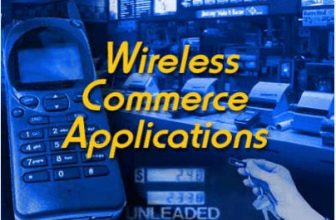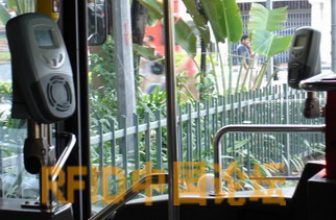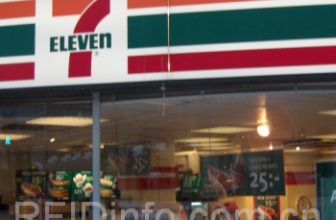
Mobile payment application case: Shanghai
[ad_1]
1. Overall development
At the beginning of 2009, Shanghai Transportation Card Co., Ltd., China Unicom Shanghai Branch and Fudan Microelectronics Co., Ltd. jointly discussed the application of mobile phone payment in transportation card applications, including the technology adopted, the development of COS, and the issuance and management of mobile phone cards Wait. Starting from April 2009, the project research and development of mobile phone payment applications in the field of public transportation in Shanghai has been initiated. Since Unicom’s mobile phone card was officially issued in Shanghai in September 2009, incomplete statistics show that the current daily transaction volume of mobile phone card business is 225 transactions/day, and the daily transaction value is 660 yuan/day. Compared with the daily transaction number and value of the entire Shanghai public transportation card application, the proportion of mobile payment cards is about 0.002%.
In the second half of 2009, as the main sponsor of the Shanghai World Expo, China Mobile Shanghai Branch also started the application of mobile payment. First, it realized the system embedding in the Shanghai subway application, and realized the mobile payment function on some gates of the Shanghai subway station. Then, with the launch of the Shanghai World Expo special line bus, in early 2010, it began to cooperate with the company in the World Expo special line. Mobile toll collection applications have been implemented on more than 500 buses. As of now, according to incomplete statistics, the number of daily transactions of mobile payment in subway applications is 4,000, and the daily transaction amount is about 15,000 yuan.
After China Unicom and China Mobile have launched the application of mobile payment in the field of public transportation, Shanghai Telecom is also actively cooperating with Fudan Microelectronics to develop mobile phones with dual-card payment functions for business cards and transportation cards. Contact, plan to carry out toll payment business in the field of public transportation in Shanghai. In mid-April 2010, it will launch new products and officially sell. Currently, mobile phone products are undergoing testing and verification.
2. The specific problems of mobile payment in the field of public transportation
Technically speaking, China Unicom and China Telecom’s mobile payment mobile phone cards use NFC technology, while China Mobile uses 2.4G technology, so there is a big difference between the two in practical applications.
For NFC mobile phones, the electronic wallet used for payment uses non-contact card technology that meets the ISO14443 TYPE A standard. Therefore, from the perspective of application, it can be regarded as an extension of the transportation card application. The file structure inside the card is the electronic wallet. The formats conform to the application standards of Shanghai public transportation card, so it can be regarded as a special-shaped transportation card. Generally, the digital logic part of this type of mobile phone card is embedded in the SIM card, and only two communication terminals are drawn out to connect with the antenna of the housing to realize the non-contact swiping consumption function. Therefore, this type of mobile phone needs to be purchased separately, and the user’s mobile phone cannot be modified, and the antenna structure of this type of mobile phone is different depending on the shape and structure. There are large differences and the consistency of the antenna parameters cannot be achieved. The parameters need to be adjusted individually according to each mobile phone to achieve antenna matching. At the same time, in actual use, this kind of structure often encounters poor antenna contacts, which results in failure to swipe the card, or damage to the call function of the mobile phone due to factors such as interference.
As for the payment card for mobile phones, because it is 2.4G technology, it can be regarded as an independent payment system in fact. It is necessary to modify the current bus consumer terminal to embed a 2.4G dedicated module to realize mobile The payment function of the payment card, so structurally speaking, it and the current public transportation payment are actually two independent payment channels, and the card selection is realized through the judgment of the software. From the practical application effect, this kind of mobile phone has the problem of mutual interference with the current public transportation payment system in practical applications, which affects the sensing distance of the 13.56M transportation card, and may even cause the success of the transportation card swiping due to interference. But from the user’s point of view, it can realize bus consumption without changing the mobile phone after directly replacing the SIM card.
From an application perspective, whether it is an NFC mobile phone or a mobile 2.4G mobile phone payment, before the mobile phone has the payment function, you need to go through the relevant procedures at each business hall. At the same time, you need to have a bank card bound to the mobile phone card. In actual use, you need to pass Built-in special software or telephone method on the mobile phone, transfer the amount in the bank card account to the mobile phone SIM e-wallet to use.
Although both 2.4G mobile payment cards and NFC technology mobile payment cards have been partially applied in the field of public transportation payment in Shanghai, there are several problems that need to be resolved in terms of development.
The first is the standard issue. At present, there are no relevant standards for mobile payment cards of the two technologies. Therefore, the current application can only be said to be a trial run without a standard basis. The product testing is only carried out in terms of functionality, and the mobile phone The performance of the card, such as field strength, EMC radiation interference, read-write time, read-write distance and other key indicators, cannot be tested under the standard. At the same time, the influence of the mobile phone card on the phone call function and the performance of the current public transportation system need to be explored through the application. In particular, 2.4G mobile payment cards are used for special modules that need to be embedded in the terminal, which will have a greater impact on the terminal itself and the cost of the terminal itself. Therefore, relevant departments are required to issue relevant standards or guiding opinions as soon as possible to standardize the product performance of mobile phone manufacturers, and at the same time enable system operators to put forward more practical application specifications for application requirements under the premise of standards.
At the same time, as a branch of public transportation payment, industry departments should issue relevant application specifications, such as the management of mobile payment card wallets, and the clearing and settlement flow of mobile transaction data. At present, with the continuous development of urban traffic ITS systems, many cities have proposed the interaction of dynamic real-time data and ITS intelligent platforms to realize the dynamic dispatch of urban public transport. Therefore, it is recommended that no matter what payment method is used, the transaction data generated should be connected to the system platform of the relevant department responsible for urban transportation electronic payment (currently, Unicom’s transaction data and mobile bus consumption data are all settled and cleared through the company. At the same time, for mobile payment cards used in the public transportation field, the key management, issuance, recharge, and wallet management of the card should be managed by urban transportation electronic payment management departments such as transportation card companies for security control and operation management.
[ad_2]






